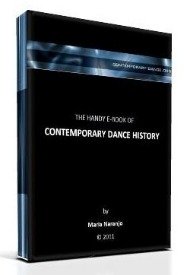Dance notation and
how to write it?
by Sydni-Caet Smith
(California, USA)
My name is Sydni, and I have just begun my dance training as a 16 year old. I love it, and I know that I have truly found my passion in life. It is a constant joy in my life, something that has really given my life meaning and happiness! Contemporary dance is definetely my favorite, so you can imagine how ecstatic I was when I found this site!
Recently I have been researching dance notation lately. Despite my extensive research, I am still really lost on this subject, and I was hoping you could help me! I have about an 8-count that I would love to notate, and I would so much appreciate your help! I thank you so much for your time, I know that I am one of many many submissions, but I truly appreciate your response. Thank you so very much, this means so much to me! Thank you again!
--Sydni Smith
Comments for Dance notation and
|
||
|
||
|
||
|
||
|
||
|
||
|
||
The handy e-book of CONTEMPORARY DANCE HISTORY:
The Dance Thinker is our occasional E-zine. Fill in the form below to receive it for free and join us.
Read:
"The Dance Thinker"
BACK ISSUES
Post contemporary dance announcements (workshops, auditions, performances, meetings and important news... it is free.)



